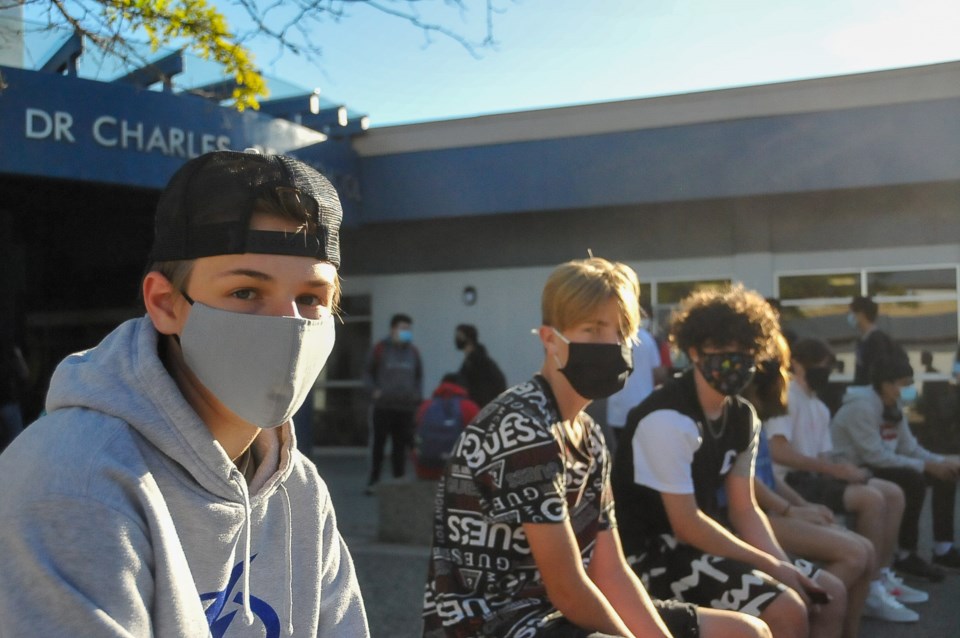On Wednesday, Sept. 23, Fraser Health flagged the first school in the Tri-Cities for COVID-19 exposure.
But while Riverside secondary in Port Coquitlam was the first in the Tri-Cities to record an exposure event, it will likely not be the last. So, for your reference, we will be updating the interactive map below should other schools record a COVID-19 exposure.
We do this in the spirit of transparency.
As Provincial Health Officer Dr. Bonnie Henry has said on multiple occasions, as long as there are cases of COVID-19 in the community, there will be cases in our schools.
The same day SD43’s first exposure was announced by Fraser Health, district superintendent Patricia Gartland released a letter outlining updated health and safety protocols for a stage 2 reopening and the steps schools would take in the event of a COVID-19 exposure.
HERE'S WHAT HAPPENS WHEN A COVID-19 CASE IS REPORTED IN A SCHOOL
- If a student or staff member is lab confirmed to be a COVID-19 case, public health contact tracers will interview the person to determine how they were infected and who they had close contact with while infected.
- If the confirmed case was not infectious while at school, Fraser Health will not contact the school. However, if the person was infectious while attending school or it’s found they contracted the virus at school, health officials will inform the school administrator.
- Public health will then request cohort and bus lists, determine if there are any confirmed close contacts and, together with school administration, decide whether they will only tell staff, students and parents potentially exposed to the virus or whether the exposure will be announced more widely (i.e. through Fraser health’s school exposure page).
- Should there be a wider risk of exposure, an “early notification letter” will be sent to the school community identifying the school and any next steps that need to be taken. Individual students, families or classrooms will not be identified in order to preserve personal privacy, but those considered a close contact will be contacted by health authorities.
- If close contact between an infectious case and others at the school is confirmed, those contacts will be asked to self-isolate for 14 days from the last exposure.
- If you are one of those contacts and symptoms develop, seek testing. However, if no symptoms develop, you can return to school after the isolation period.
- If you are not contacted by health authorities, it has been determined that your child is not at risk of developing COVID-19 and your child may continue to attend school.
- Continue to do daily health checks before school.
Families should also note that an “exposure” does not mean the affected person picked up the infection at school.
The Fraser Health website notes that an “exposure” means the case involves a single person with a lab-confirmed COVID-19 infection who attended school during their infectious period.
Two other levels of notification are also possible but have not been issued in these two cases. A “cluster” would denote two or more people with lab-confirmed COVID-19 infections who attended school during the infectious period; the cases may be linked to school-based transmission.
An “outbreak,” meanwhile, would indicate multiple people with lab-confirmed COVID-19 infection when transmission is likely widespread within the school setting.
In all of those cases, public health takes charge of investigating the case and conducting contact tracing.
More information about SD43 updated health and safety protocols can be found here: STAGE 2 HEALTH AND SAFETY PROTOCOLS: K-12 FOR PARENTS.
— with files from Julie MacLellan



